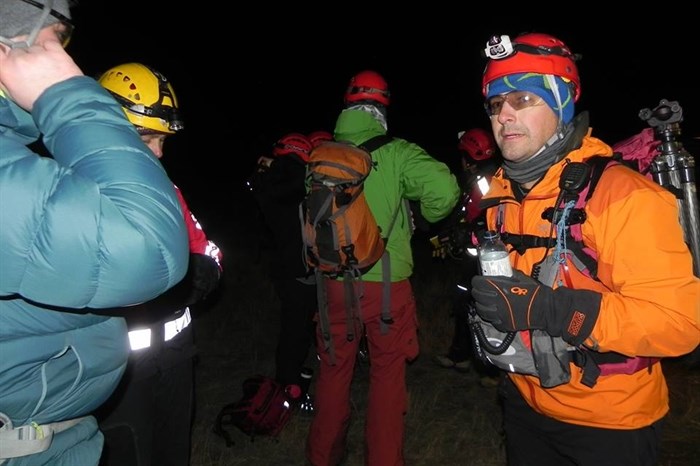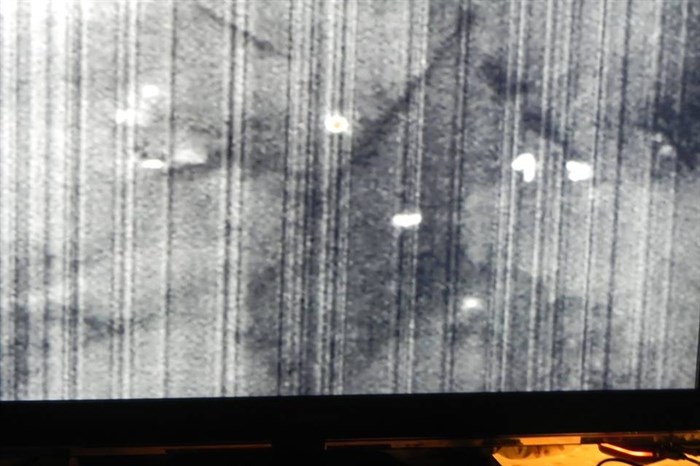
Kamloops Search and Rescue members took part in a training session with Hummingbird Drones this past Saturday, Nov. 21, 2015.
Image Credit: Mike Ritcey
November 23, 2015 - 8:00 PM
KAMLOOPS - They’ve been used to capture birds-eye view images and to find hotspots from a wildfire, and following a successful test run this weekend drones could soon be used on search and rescue missions in B.C. as well.
Kamloops Search and Rescue and local startup Hummingbird Drones partnered on a training mission this past weekend that had the company try out infrared imaging to locate searchers and subjects in the bush.
“Kamloops is probably ideal for drones and infrared,” search manager Alan Hobler says. “The tree cover is quite thick and the temperature differentials are big enough they make more of a mark (with infrared). The ground and trees are colder than a person, so it’s easier to see them.”
The local rescue group was paired up with Hummingbird Drones by Emergency Management B.C., the branch of the province responsible for approving drones for search missions.
“They’re a young Kamloops upstart company that’s quite successful with their technology. It’s not as simple as flying a drone around with a joystick,” Hobler says, noting the company has people specializing in infrared, the drone itself, gimbal balancing, streaming video, stitching together images to make maps and more.
The training session was already scheduled, the local rescue group has about 20 new members taking part in regular training, but when the request came in for the drone and infrared training they moved it to a night session. A total of 25 Kamloops members and two Logan Lake members were joined by seven people from Hummingbird Drones Saturday night, Nov. 21. Members were sent out into the dark forest to navigate with just a compass and then the drone was sent up to try and locate them, which it did quickly.
“One of the things that impressed me the most was how quickly they got up and located the members. They covered about a kilometre in a minute.”

Kamloops Search and Rescue members show up as bright spots on infrared imaging during a training session Saturday, Nov. 21, 2015.
Image Credit: Mike Ritcey
The drone picked out the searchers as bright spots moving through the bush and even picked up one of the members under a mylar blanket, which showed up as a black spot on the infrared image.
Hobler says the infrared imaging is ideal for winter and night, because of the difference in body and ground temperatures, but likely would not work quite as well in the summer.
He points to a couple of years ago where they were called out on several searches at Sun Peaks within a week as a good example of when the technology could have helped them locate the subjects more quickly.
While Kamloops is the first team to try out infrared technology with drones, Hobler says other teams have been using regular cameras mounted to drones to help spot subjects. He hopes to use the technology on a real search in the near future and hopes the province will approve the use of drones sooner rather than later.
“I’m really keen on getting this out on a real search,” he says. “My understanding is (the government is) storming ahead so we can go ahead and operate legally…. make sure the good operators are operating properly.”
While there are a lot of potential concern around drones — power lines, falling on people, commercial air space — Hobler says the risk of running helicopters at low elevations puts a lot of lives at risk on searches and replacing them with drones would go far in protecting the searchers.
He expects running drones will be cheaper than getting helicopters up in the air for searches, but right now Hummingbird Drones is partnering with them, at no cost, just to test the technology and see how they can make it work better.
“This company is just a bunch of upstarts that are keen and passionate,” Hobler says, adding when he spoke to them about the possibility of finding a live subject and saving a life "their eyes just popped."
Drones and infrared imaging will not replace searchers, Hobler notes, but rather will just be another tool to make searches more effective.

Image Credit: Mike Ritcey
To contact a reporter for this story, email Jennifer Stahn at jstahn@infonews.ca or call 250-819-3723. To contact an editor, email mjones@infonews.ca or call 250-718-2724.
News from © iNFOnews, 2015